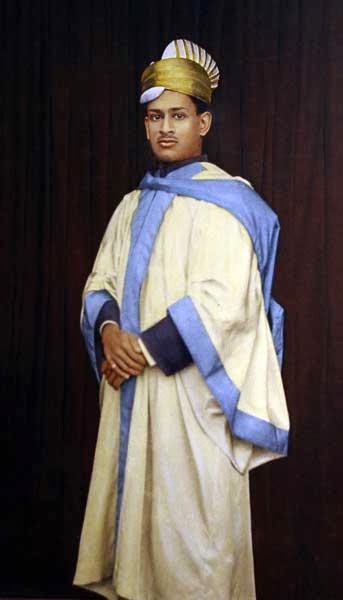- By Deepa Krishnan
If you walk into the Bhau Daji Lad Museum at Byculla, you'll see a beautiful marble bust of David Sassoon, Mumbai's most famous Jewish businessman and philanthropist.
![]() |
| David Sassoon (1792 to 1864) |
The Sassoon family history is a little fuzzy. One theory is that they originally came from the mountainous region of Sason in modern-day Turkey. The Sasoon surname is even today found among the Armenian and Kurd population of Sason. It is possible that some Sephardic (Spanish) ancestry existed among the Jews of Sason. In fact, according to Shaul Sapir, author of "Bombay - Exploring the Jewish Urban Heritage", the Sassoons trace their ancestry to Spain, to a family called the Ibn Shoshan (ibn Susan) who lived in the city of Toledo. Perhaps some branch of the Ibn Shoshan clan migrated to Turkey.
![]() |
| The city of Toledo, near Madrid, Spain |
Whatever their history and origins, the earliest member of the Sassoon family to arrive in India was David Sassoon in 1832. He was born in Baghdad (present day Iraq) to a wealthy Jewish family who served as bankers and treasurers to the pasha. Fleeing political trouble, David Sassoon moved his wealth from Baghdad to Bushehr (Iran) in 1828. Four years later, he moved his wealth further east from Bushehr to Bombay.
In the early 19th century, Bushehr was the primary port in Iran. The East India company had a base at Bushehr and nearly 100 English and Arab ships came there each year from India and Muscat to trade. Goods from China and India were traded at Bushehr: cloth, metals, spices, indigo, tea, rice, sugar, pottery and porcelain, and wood for shipbuilding. Thus, it was possibly logical for David Sassoon to transition from Bushehr to Bombay, another British trading port.
David Sassoon was 40 years old when he came to Bombay. Initially, he operated as a middleman for the British East India Company, using his contacts in the the middle-east. In 1842, ten years after David Sassoon arrived in Bombay, the British signed the Treaty of Nanking with the Chinese Emperor, opening up the Chinese market for trade in opium. Several Parsi merchants made the most of the opportunity; but David Sassoon was the first Jewish businessman to send his sons to open offices in Canton, Shanghai and Hong Kong to profit from the trade.
A sort of three-way flow emerged: the Sassoons would export Indian yarn and opium to China; then from China, they would export tea and silk to Britain; and from Britain they exported textile goods into India. It's too complicated to draw, so I've only shown the first part of the transaction in the map above (the export from India to China).
If you want to see what the opium factories and inland shipping looked like, click on the engraving below. You can see a larger image:
![]() |
David Sassoon with
three of his sons |
According to Sir Jamsetjee Jeejeebhoy, a contemporary of David Sassoon in the opium business, "....the chief cause of David Sassoon's success was the use he made of his sons". And sons there were several: two from his first wife Hannah Joseph; and after her death, six from his second wife Farha Hyeem. Although David Sassoon spoke no English, his sons learnt the language and adopted Western modes of clothing as well.
As the Sassoon wealth grew, so did their munificence. They built synagogues, gardens, hospitals, schools and colleges in Mumbai. It looked as if David Sassoon decided that Bombay was a good place to settle down permanently. He built a palatial house in Byculla for himself and invested in improving facilities for Jewish people in Bombay.
The Sassoons were keen to establish an excellent relationship with the British. They owned large tracts of land in Byculla, and from their holdings they donated a parcel of land to create the Victoria and Albert Museum (now called Bhau Daji Lad Museum). Here's the statue inside the Bhaudaji Lad Museum, containing the dedication to Prince Albert, by David Sassoon:
![]() |
| Statue of Prince Albert with David Sassoon's statue placed at the foot. The figures on the left and right are Science and Art |
The dedication is in five languages: Hebrew, Marathi, Gujarati, Persian and English. It says:
Albert,
Prince Consort
Dear to Science, Dear to Art
Dear to Thy Land and Ours, A Prince Indeed
Dedicated by David Sassoon
1864
David Sassoon spent 32 fruitful years in Bombay, providing leadership (and employment) to the Jewish community of the city. When he died in 1864, his son Albert Abdallah Sassoon took over leadership of the vast Sassoon business interests. Albert Sassoon migrated to London, married into the very wealthy Rothschild family, and acquired a Baronetcy. Another son, Elias David Sassoon, set up his own independent firm in China, and thus left Bombay. In fact, six of David Sassoon's eight sons eventually migrated, leaving behind very few Sassoons in Mumbai.
I wonder if David Sassoon realised during his lifetime that his family's involvement with Bombay would be limited to 2 or 3 generations. Today there is no member of the family in Bombay, but the beautiful monuments they have left behind are a lasting legacy.


















































































































